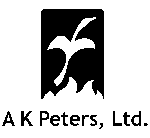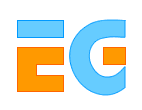State of the Art Reports (STARs)
STARs are 90 minute presentations giving an overview of recent developments in carefully selected rather narrow areas by active researchers in that field. STARs will take place on Wednesday through Friday (6-8 Sept).
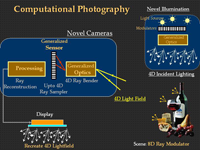
| Date: | Wednesday, 6th September |
| Time: | 11:40-13:10 |
| Location: | Lecture Room 3 (Clubraum) |
| Session Chair: | Georg Zotti |
Computational photography combines plentiful computing, digital
sensors, modern optics, actuators, probes and smart lights to
escape the limitations of traditional film cameras and enables
novel imaging applications. Unbounded dynamic range, variable
focus, resolution, and depth of field, hints about shape,
reflectance, and lighting, and new interactive forms of photos that
are partly snapshots and partly videos are just some of the new
applications found in Computational Photography.
We describe the latest computational methods in digital imaging
that overcome the traditional limitations of a camera and enable
novel imaging applications. The STAR provides a practical guide to
topics in image capture and manipulation methods for generating
compelling pictures for computer graphics and for extracting scene
properties for computer vision, with several examples. There has
always been an interest in the computer graphics community for
image-based applications. But, thanks to the growing prevalence of
digital cameras, there has recently been a renewed interest in
digital photography-based research and products. The papers at
Eurographics and Siggraph conferences include high dynamic range,
matting, image fusion, synthetic aperture using camera arrays,
flash photography and cartooning. A more detailed list is included
in the sample bibliography. We plan to give an overview of these
publications, papers at computer vision conferences and topics in
scientific imaging beyond photography
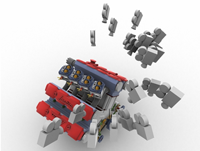
| Date: | Wednesday, 6th September |
| Time: | 14:35-16:10 |
| Location: | Lecture Room 3 (Clubraum) |
| Session Chair: | Brian Wyvill |
Progress in modelling, animation and rendering means that rich, high fidelity interactive virtual worlds are now commonplace. But as photographers and cinematographers know, achievement of the intended informational and aesthetic goals is highly dependent on the position and motion of the camera in relation to the elements of the scene. Camera control encompasses interactive approaches, semi-automatic camera positioning, and fully declarative approaches to the management of a user's viewpoint on a scene. Camera control is required in nearly all interactive 3D applications and presents a particular combination of technical challenges for which there have been a number of recent proposals (e.g. specific path-planning, management of occlusion, modelling of high-level communicative goals). Through a State of The Art Report, we propose to describe the issues, technical challenges, recent advances and perspectives related to automated camera control in computer graphics.
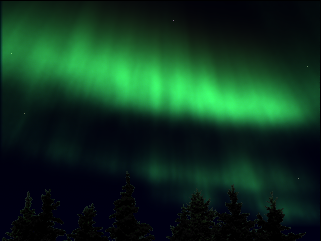
| Date: | Wednesday, 6th September |
| Time: | 16:30-18:00 |
| Location: | Lecture Room 3 (Clubraum) |
| Session Chair: | Alexander Wilkie |
Most of the universe consists of plasma (hot, ionized gases composed of ions, electrons and neutral particles). An understanding of plasma phenomena is therefore of importance for almost every area of astrophysics, from stellar atmospheres to star clusters. Plasmas also occur in daily life both in industrial processes and in consumer products. Recent groundbreaking data is making this the golden age of plasma science. Although direct observations and analysis of data provide important physical evidence for plasma phenomena, they do not necessarily explain the phenomena. Hence, recent discoveries in this area might not only arise out of observations, but also from visual simulations of the phenomena supported by advanced rendering technologies. This report describes the state of art of such simulations, and examines practical issues often overlooked in the literature. Their applications in education and entertainment are also discussed. Although the emphasis is on the predictive rendering of plasma processes, the simulation guidelines and trade-offs addressed in this report can be extended to the general simulation of natural phenomena. The report closes with a discussion of further avenues of research involving the simulation of plasma phenomena.
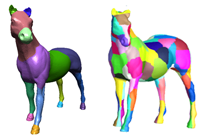
| Date: | Thursday, 7th September |
| Time: | 9:00-10:30 |
| Location: | Lecture Room 3 (Clubraum) |
| Session Chair: | Helmut Pottmann |
In this report we present the state of the art on segmentation, or partitioning techniques used on boundary meshes. Recently, these have become a part of many mesh and object manipulation algorithms in computer graphics. We formulation the segmentation problem as an optimization problem and identify two primarily distinct types of mesh segmentation, namely parts segmentation and patch segmentation. We classify previous segmentation solutions according to the different segmentation goals, the optimization criteria and features used, and the various algorithmic techniques employed. We also present generic algorithms for the major techniques of segmentation.
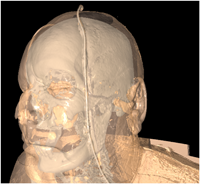
| Date: | Friday, 8th September |
| Time: | 9:00-10:30 |
| Location: | Lecture Room 2 (Sitzungssaal) |
| Session Chair: | Vlastimil Havran |
Recent research on high-performance ray tracing has achieved realtime performance even for highly complex models already on a single PC. In this report we provide an overview of techniques for extending realtime ray tracing also to interactive volume rendering. We provide fast rendering techniques for different volume representations and rendering modes in a variety of computing environments. The physically-based rendering approach of ray tracing enables high image quality and allows for easily mixing surface, volume, and other primitives in a scene, while fully accounting for all of their optical interactions. We present optimized implementations and discuss upcoming high-performance processors and their use for volume ray tracing.
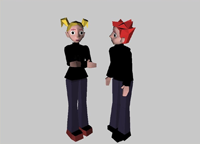
| Date: | Friday, 8th September |
| Time: | 11:00-12:30 |
| Location: | Lecture Room 2 (Sitzungssaal) |
| Session Chair: | Francois Faure |
Virtual characters are an important part of many 3D graphical simulations. In entertainment or training applications, virtual characters might be one of the main mechanisms for creating and developing content and scenarios. In such applications the user may need to interact with a number of different characters that need to invoke specific responses in the user, so that the user interprets the scenario in the way that the designer intended. Whilst representations of virtual characters have come a long way in recent years, interactive virtual characters tend to be a bit "wooden" with respect to their perceived behaviour. In this STAR we give an overview of work on expressive virtual characters. In particular, we assume that a virtual character representation is already available, and we describe a variety of models and methods that are used to give the characters more "depth" so that they are less wooden and more plausible. We cover models of individual characters' emotion and personality, models of interpersonal behaviour and methods for generating expression.












